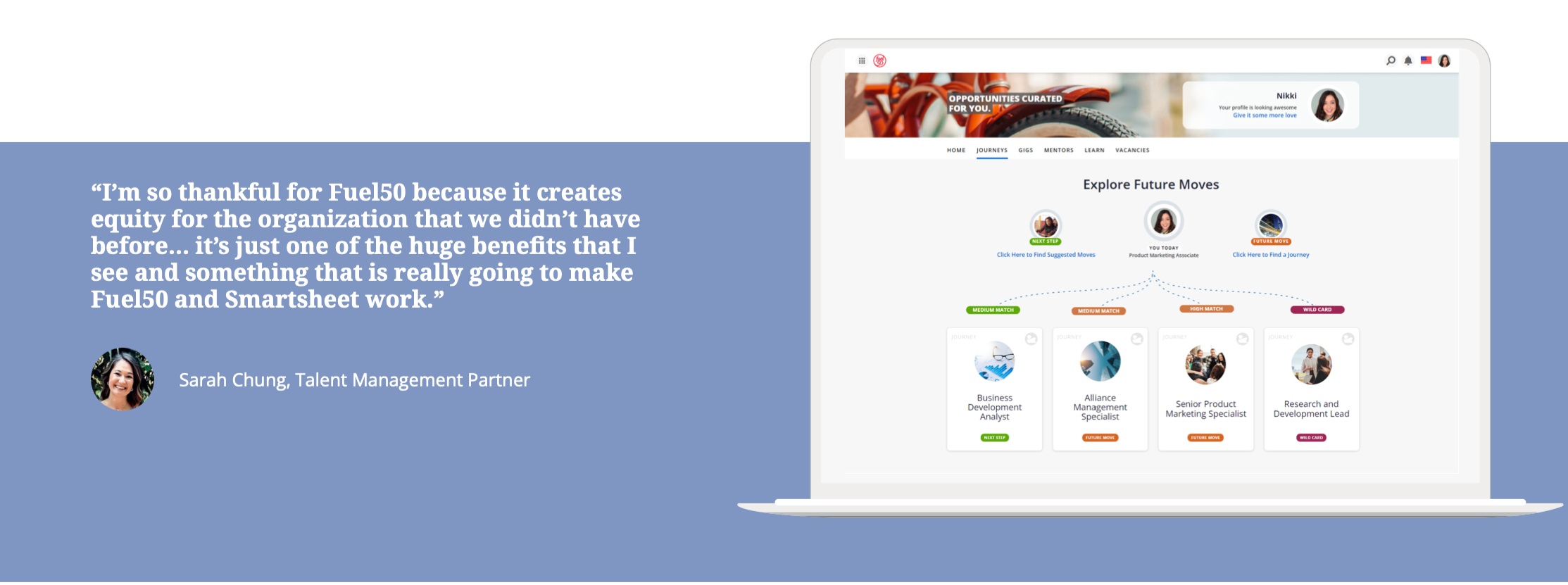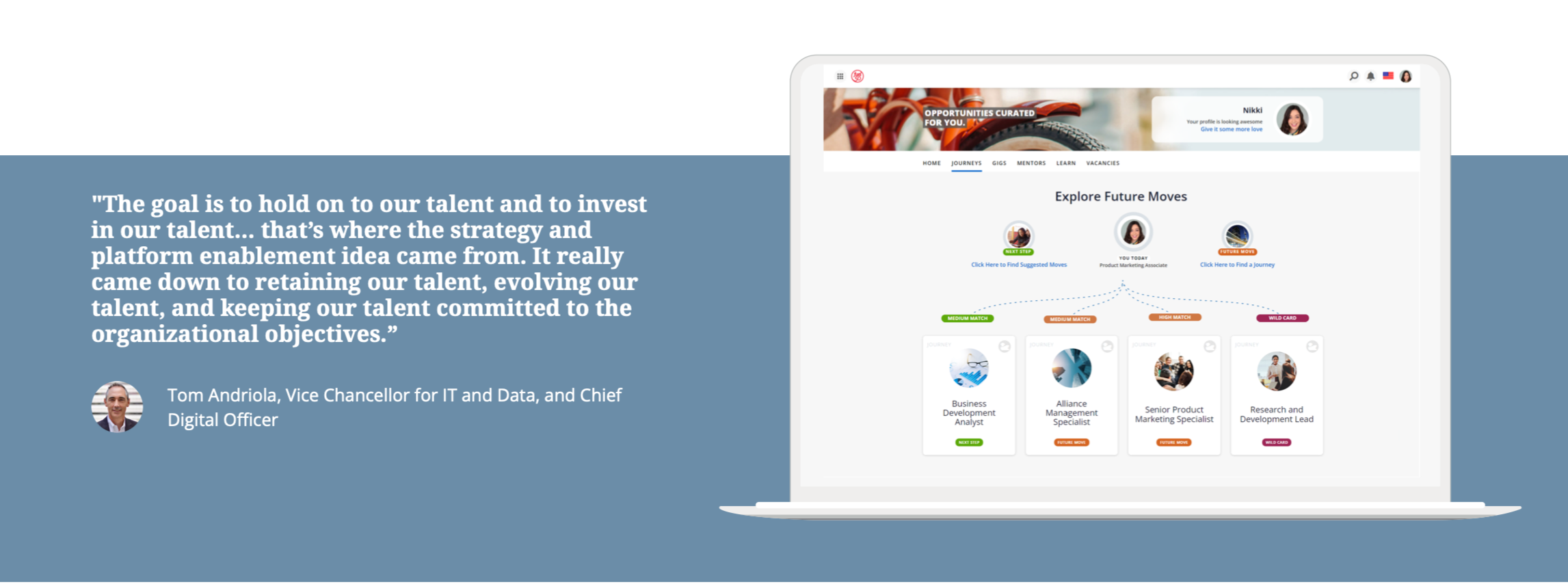The urgent race for talent has exposed critical weaknesses in how organizations develop their people. Technical skills grow obsolete faster than ever, with the World Economic Forum estimating that 50% of all employees will need reskilling by 2025. Meanwhile, leadership pipelines have begun to run dry as Baby Boomers retire and take decades of institutional knowledge with them.
These challenges raise an existential threat to organizations unprepared to develop talent at the speed and scale required in today’s marketplace.
In response to these pressures, corporate mentorship programs have evolved dramatically. Once limited to informal coffee chats between senior executives and promising juniors, mentorship initiatives now leverage data, technology, and strategic design to tackle specific business challenges.
Modern programs foster systematic knowledge transfer, accelerate skill development, and build robust talent pipelines while improving retention of critical talent.
The most successful organizations treat mentorship not as an HR luxury but as a strategic talent lever. Their programs go beyond simplistic mentor-mentee matching to create comprehensive talent development ecosystems that identify high-potential personnel, close critical skill gaps, and increase workforce agility.
In this article, we’ll talk about successful corporate mentorship programs and how you can construct your own.
What are corporate mentorship programs?
A corporate mentorship program is a strategic talent development approach that pairs experienced professionals with less experienced colleagues to facilitate knowledge transfer, skills development, and career advancement.
Unlike informal mentoring that happens organically, these formal programs follow structured frameworks with clear objectives, timelines, and accountability mechanisms.
Mentorships typically feature multiple methodologies:
- One-on-one mentoring: Traditional pairing of a senior mentor with a junior mentee.
- Reverse mentoring: Junior employees teach senior staff about emerging technologies or cultural perspectives.
- Group mentoring: One mentor works with several mentees simultaneously.
- Peer mentoring: Colleagues at similar levels assist each other in areas of complementary expertise.
- Flash mentoring: Short-term, focused mentoring sessions centered on specific skills or challenges.
The most sophisticated programs integrate mentorship into broader talent development ecosystems. At the University of California, Irvine (UCI), for instance, their mentorship program operates within a comprehensive talent marketplace.
There, employees can take on “gigs” in other departments, receive mentorship aligned with their career goals, and access personalized learning resources—all unified by a skills ontology that maps the relationships between roles.
What distinguishes today’s corporate mentorship programs is their emphasis on mutual value creation.
Unlike traditional models, where mentees are passive recipients of wisdom, contemporary approaches recognize that mentorship yields commensurate benefits: Mentors develop leadership skills and gain fresh perspectives, while mentees acquire technical knowledge and organizational savvy.
For organizations battling the skills crisis, mentorship programs provide a data-driven framework that can identify high-potential talent, close critical skill gaps, and build a more agile, future-ready workforce.
5 Steps to create a successful mentorship program
Implementing a mentorship program requires strategic planning and thoughtful execution. The difference between programs that drive measurable outcomes and those that fade into organizational obscurity lies in the rigor of their design and implementation.
Here’s how to build a mentorship program that delivers tangible results.
1. Define clear objectives and success metrics
The foundation of an effective mentorship program begins with clearly defined objectives that align with business priorities. Vague goals like “develop talent” lead to murky results.
Instead, outline specific outcomes, such as, “reduce new manager ramp-up time from six months to three,” “increase internal mobility by 25%,” or “improve retention rates among high-potential employees.”
Useful metrics typically span these four categories:
- Participation metrics: Enrollment rates, completion rates, demographic representation
- Experience metrics: Satisfaction scores, perceived value, relationship quality
- Developmental metrics: Skill acquisition, knowledge transfer, behavioral change
- Business impact metrics: Retention rates, promotion velocity, performance improvements
Without these explicit success parameters, mentorship programs risk becoming social initiatives rather than effective talent development mechanisms. The precision of your objectives directly determines the quality of your results.
2. Design a structured framework with flexibility
Successful mentorship programs balance structure with flexibility. The framework should include defined time commitments (typically 1-2 hours per month over 6-12 months), along with suggested meeting cadences and milestone markers to ensure steady progress.
That structure encourages accountability while still allowing relationships to develop authentically.
This balance also addresses one of the primary reasons mentorship programs fail: participants who are uncertain about expectations and unsure how to progress the relationship productively.
Effective frameworks therefore include reflection opportunities with structured prompts for ongoing learning, as well as exit pathways that allow for graceful closure if matches prove ineffective. These elements create psychological safety that enhances openness to learning and experimentation.
3. Select and match participants strategically
The matching process fundamentally shapes program outcomes. Random pairings or assignments based solely on hierarchy frequently fail.
Smart matching, however, considers multiple dimensions, including skills and knowledge gaps versus strengths, career aspirations and experience, personality compatibility, learning and teaching styles, schedule alignment, and diversity considerations.
Organizations increasingly leverage technology to support this process, employing algorithms that analyze multiple factors to suggest optimal pairings.
This data-driven approach therefore reduces bias and improves match quality. Strategic matching acknowledges that not every senior leader makes an effective mentor for every junior employee; the chemistry between participants matters tremendously.
Some organizations implement “speed mentoring” events, where potential mentors and mentees interact briefly before making a choice, similar to academic advisor selection.
This approach increases ownership and commitment from both parties while acknowledging the importance of personal connection in successful mentoring relationships.
4. Provide comprehensive training and resources
Many mentorship programs flop because they assume participants know how to engage in productive developmental relationships. In reality, effective mentoring is a learned skill.
Mentors need training in active listening, questioning, providing constructive feedback, goal setting, and boundary setting. For their part, mentees benefit from guidance on taking the initiative, receiving feedback, preparation, accountability, and managing expectations.
Organizations should supplement initial training with ongoing resources such as conversation guides, development templates, skill-building modules, and case studies of successful mentoring partnerships.
These resources provide scaffolding that supports participants through uncertain moments and helps them navigate challenges. Successful programs treat mentorship skill development as seriously as other leadership competencies and integrate it into broader talent development frameworks.
5. Monitor progress and measure impact
The final step transforms mentorship from a “feel good” initiative into a lever for talent development. Implement regular check-ins and formal evaluations that assess progress against the objectives and metrics established in step one.
Robust monitoring entails regular pulse surveys for participants, structured feedback sessions at key milestones, data collection on development goals and progress, pre- and post-skill assessments, and documentation of success stories and learnings.
Progess monitoring serves two purposes: It identifies any necessary course corrections and generates evidence of impact that builds organizational support for the program’s continuation and expansion. Without such evidence, mentorship programs often fall victim to budget cuts when resources are constrained.
Establish feedback loops between monitoring insights and program design to construct a continuous improvement cycle that enhances outcomes over time. These loops should incorporate perspectives from mentors, mentees, and their managers to capture the full impact of the program.
Companies that rigorously measure the impact of their mentorship programs often discover unexpected benefits beyond the initial objectives.
These can include innovation improvements as diverse perspectives connect, enhanced organizational knowledge transfer, and strengthened cultural alignment. Capturing ancillary benefits strengthens the business case for ongoing investment.
3 Examples of corporate mentorship programs that work
The following organizations demonstrate how thoughtfully designed mentorship initiatives solve specific business challenges while providing substantial value to participants.
RTI International
RTI International faced a classic challenge that many organizations struggle with: Their 2017 employee survey revealed their workers felt stuck.
Growth opportunities were invisible, learning activities felt disconnected from daily work, and there was a clear hunger for mentoring.
Instead of slapping together a quick mentoring program as a band-aid, RTI took a step back and asked, ”What does our talent need?”
The answer, as their Senior Director of Global Talent Development put it, was, “With a highly intellectual organization, we don’t need more learning and development … we need more connectivity.”
This insight drove them to create DEVELOP & GROW, a comprehensive talent strategy with mentoring at its heart. They didn’t overwhelm employees with an everything-at-once approach but instead phased in implementation thoughtfully using design thinking principles.
The impact speaks for itself: 128 mentor relationships flourished (up by 36 from their initial launch), with 31% of mentors bringing 10 to 20 years of organizational experience to the table. This built vital knowledge bridges while expanding leadership capacity for the future.
Smartsheet
Smartsheet introduced a mentorship program to address specific talent development and retention challenges. Employees wanted more growth opportunities but were unaware of potential career paths within the organization.
Their mentorship initiative stands out for its integration into broader career development resources. Rather than positioning mentoring as a separate program, Smartsheet embedded it within their talent marketplace platform to create a holistic development ecosystem.
The program’s success metrics demonstrate significant engagement, with 64% of users returning to the platform regularly.
More importantly, employees have targeted 785 specific roles for potential career movement, showing how mentorship boosts career visibility and opens internal mobility pathways.
Furthermore, Aon’s efforts in transforming employee experience also underscore the importance of internal mobility and engagement.
Sarah Chung, talent management partner at Smartsheet, highlighted the unexpected international connections that emerged: “It’s been really, really awesome to see all the engagement from our employees about Fuel50’s mentorship feature.”
These global mentoring relationships that wouldn’t have formed through traditional channels have fostered enriching knowledge exchanges across geographic boundaries.
The University of California, Irvine
The University of California, Irvine (UCI) developed a mentorship program to tackle talent retention challenges identified through employee engagement surveys. Specifically, their workforce voiced frustrations about unclear career paths and difficulty matching their skills to internal opportunities.
UCI decided to integrate mentorship into a comprehensive talent ecosystem, rather than treat it as a standalone initiative. Their platform facilitates mentoring connections while simultaneously enabling employees to discover internal “gigs” and development opportunities that support their career aspirations.
As a result, UCI secured a 4% turnover rate, compared to the industry average of 13%-15%—a reduction of over 70%. The program facilitated 28 internal gigs in its first week alone, creating immediate cross-disciplinary development opportunities.
Perhaps most telling is how mentorship transformed UCI’s understanding of their talent landscape. As Tom Andriola, vice chancellor for IT and data and chief digital officer, observed, “We’re running at about a third of our industry’s typical turnover rate, and we think that the platform has provided a tremendous input into keeping that number much lower than our peers.”
This success stems from the program’s ability to make skills and opportunities visible while fostering genuine connections between employees.
The above four examples demonstrate that, no matter the context, successful mentorship programs share certain key characteristics.
Each program aligns with specific business challenges, integrates with broader talent strategies, emphasizes employee empowerment, and measures concrete outcomes.
The commonalities across these diverse organizations reveal a clear pattern that mentorship delivers maximum impact when positioned as a strategic talent lever rather than a standalone HR initiative.





